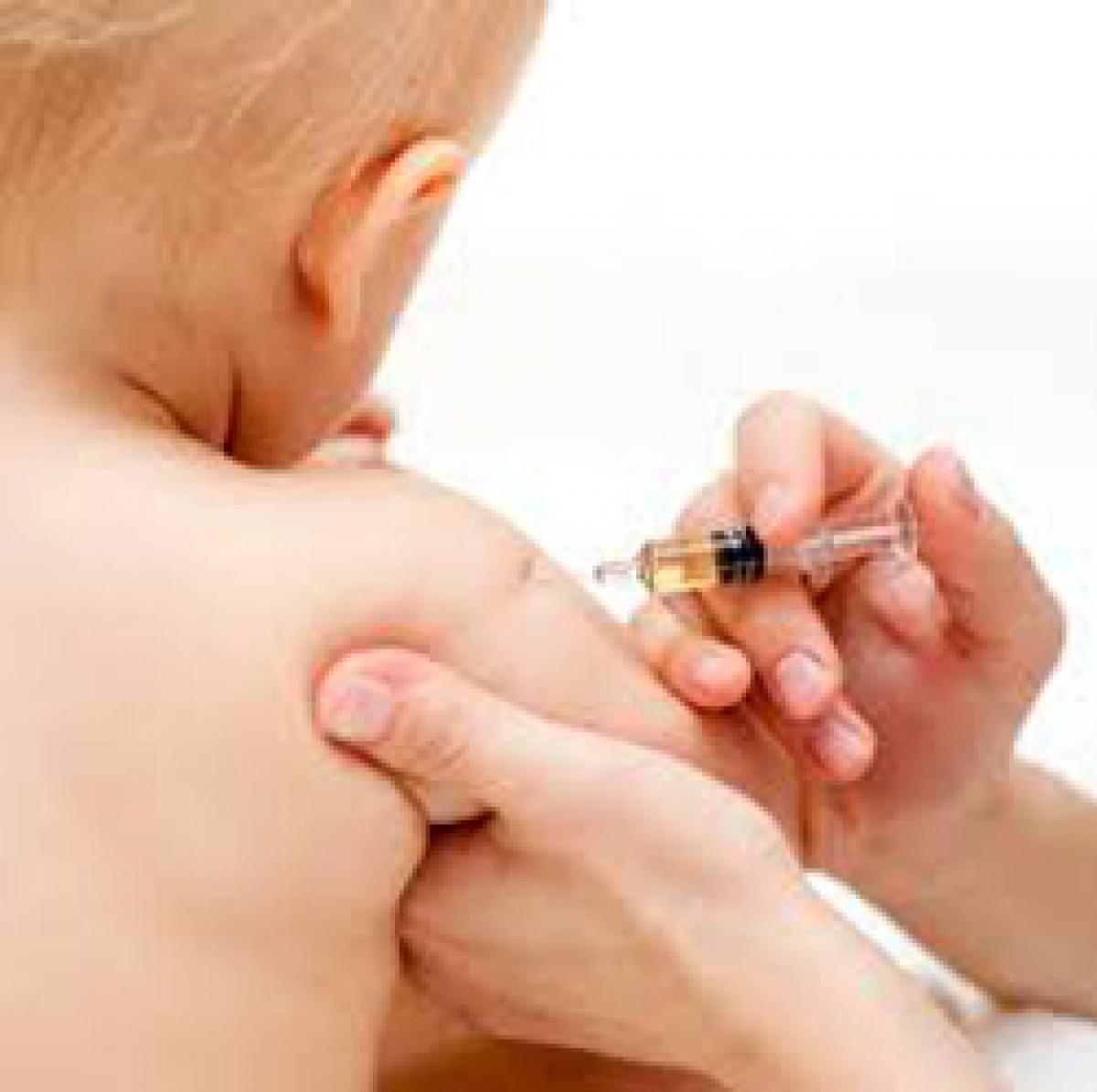Live
- Tension grips at Vijayawada CP office amid Vaddera colony residents protest
- Hyundai Motor launches Grameen Mahotsav
- 5-mth-old Infy shareholder to earn Rs 4.2 cr in dividends
- YSRCP state secretary Afzal Khan joins in Congress, creates stir in Kadapa
- Nomination filing picks up momentum in Kurnool, Nandyal districts
- Core Integra launches Ctrl F 2.0
- Ray, Nayak fighting for 4th term MLA in Rourkela
- New Delhi: Hockey star Dilip Tirkey aims at scoring winning goal
- IndiGo, Archer to launch electric air taxis in India
- Markets snap 4-day losing streak, up on value buying
Just In

Facts belie govt claim. Health Minister J P Nadda sparked scepticism when he declared on June 30 that India would reach the universal immunisation target, or 95 per cent of all children, by the end of 2016. The disbelief gets credence because less than four months ago Nadda told parliament it would take five years to immunise 90 per cent of India’s children.
 Universal immunisation
Universal immunisation
The government declared on June 30 that India would reach the universal immunisation target, or 95 per cent of all children, by the end of 2016
Health Minister J P Nadda sparked scepticism when he declared on June 30 that India would reach the universal immunisation target, or 95 per cent of all children, by the end of 2016. The disbelief gets credence because less than four months ago Nadda told parliament it would take five years to immunise 90 per cent of India’s children.
Only 65 per cent of children are now immunised, the best rate achieved in 38 years since the Universal Immunisation Programme (UIP), as it is officially called, was started. It targets 27 million new-born children and 30 million pregnant women every year. In India, 5,00,000 children die of vaccine-preventable diseases because one in three misses the benefits of full immunisation, according to government data.
“The government has launched Mission Indradhanush on December 25, 2014 with an aim to cover all those children who are partially vaccinated or unvaccinated. The mission focuses on interventions to rapidly increase full immunisation coverage of children by approximately 5 per cent annually, and to expand full immunisation coverage to at least 90 per cent children in the next five years,” Nadda said in reply to a question in the Rajya Sabha on March 10, 2015.
The current rate of immunisation has risen to 65.2 per cent (2013-14) from 35.5 percent in 1992-93. The programme started in 1978. In 1985, it got its present name and was taken to all districts by 1989-90. Under the UIP, the government provides free vaccination against nine preventable diseases: diphtheria, pertussis (whopping cough), tetanus, polio, measles, a severe form of childhood tuberculosis, hepatitis B, meningitis/pneumonia due to haemophilus influenza B and Japanese Encephalitis.
Uttarakhand does well, UP lags
Uttarakhand with 79.6 per cent coverage is the best-immunised state, according to the Annual Health Survey (AHS) 2012-13 while Uttar Pradesh with 52.7 per cent is the worst. Uttarakhand, Chhatisgarh, Rajasthan, Bihar, Jharkhand, Odisha, Madhya Pradesh, Assam and Uttar Pradesh are high-focus states since they constitute 50 per cent of the country’s population, 60 per cent births, 71 per cent infant deaths, 72 per cent under-5 deaths and 62 per cent maternal deaths.
Even states that do better, such as Uttarakhand, Chhattisgarh and Rajasthan, fall short by 20-25 percentage points in achieving universal immunisation. Those like Goa (89.1 per cent), Sikkim (85.2 per cent) and Kerala (82.5 per cent), which are not high-focus states and do better than others, also fall short of universal coverage.
Lack of awareness among parents about vaccination benefits, fear of side-effects and a shortage of vaccines or have been cited as reasons for low immunisation. The government programme centres on 201 high-focus districts that account for nearly 50 per cent of partially vaccinated or unvaccinated children in India.
The government allocated Rs 599.87 crore over the last three years to promote immunisation. Immunisation prevents approximately 2-3 million deaths globally every year from diphtheria, tetanus, pertussis and measles. In 2013, an estimated 21.8 million infants worldwide were not reached by routine immunisation; nearly half live in India, Nigeria and Pakistan, according to the World Health Organisation.
By Chaitanya Mallapur

© 2024 Hyderabad Media House Limited/The Hans India. All rights reserved. Powered by hocalwire.com







